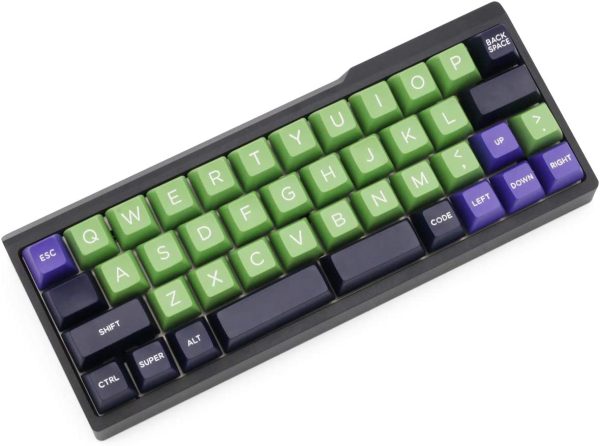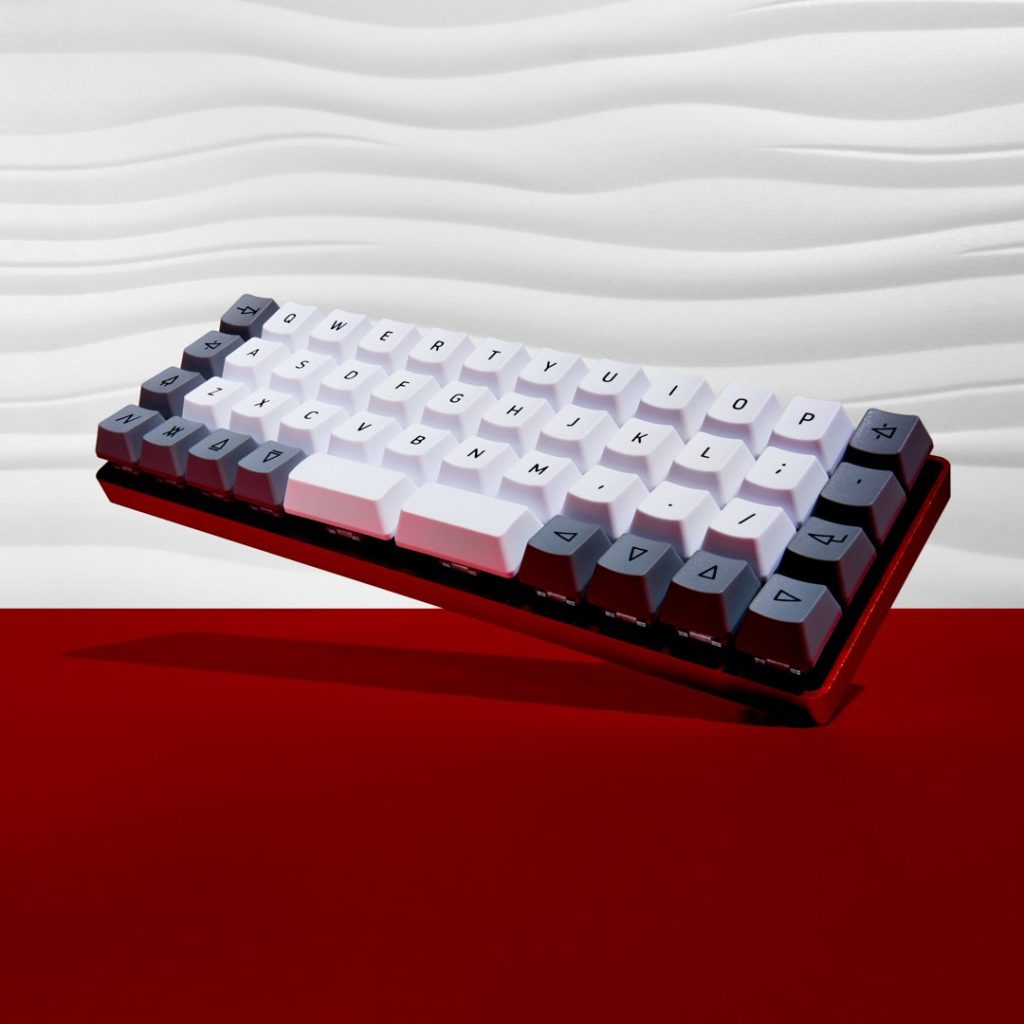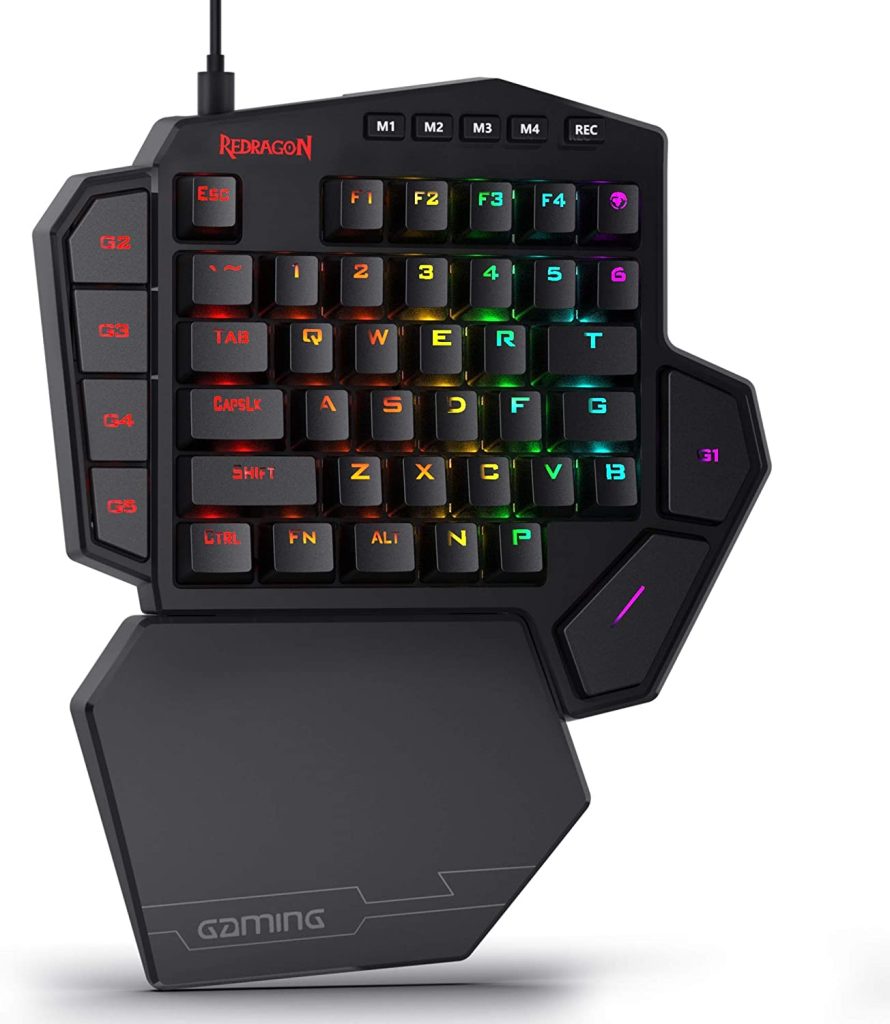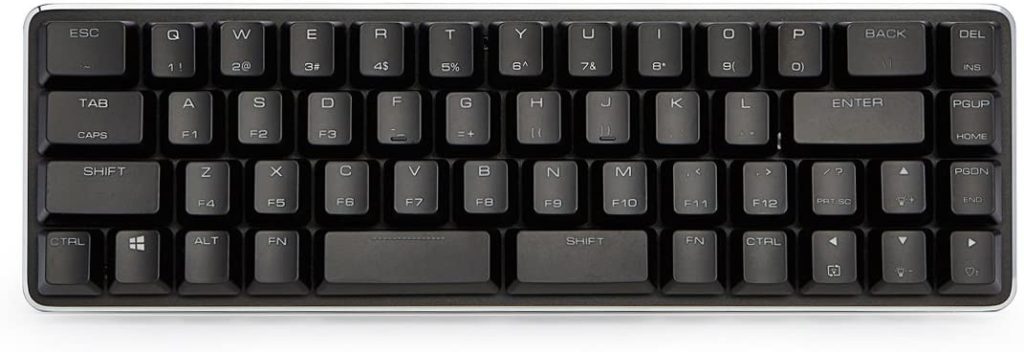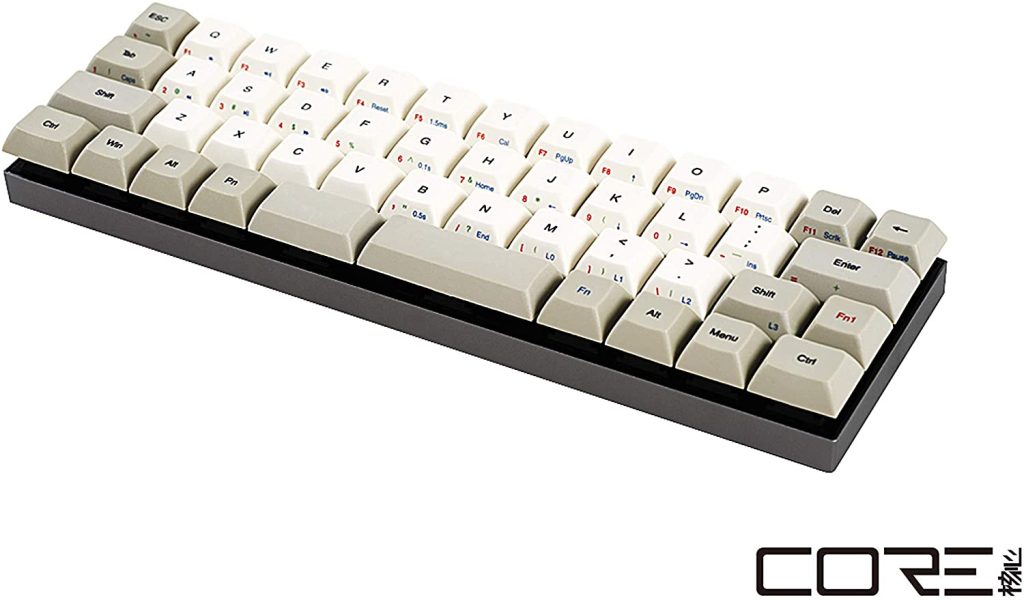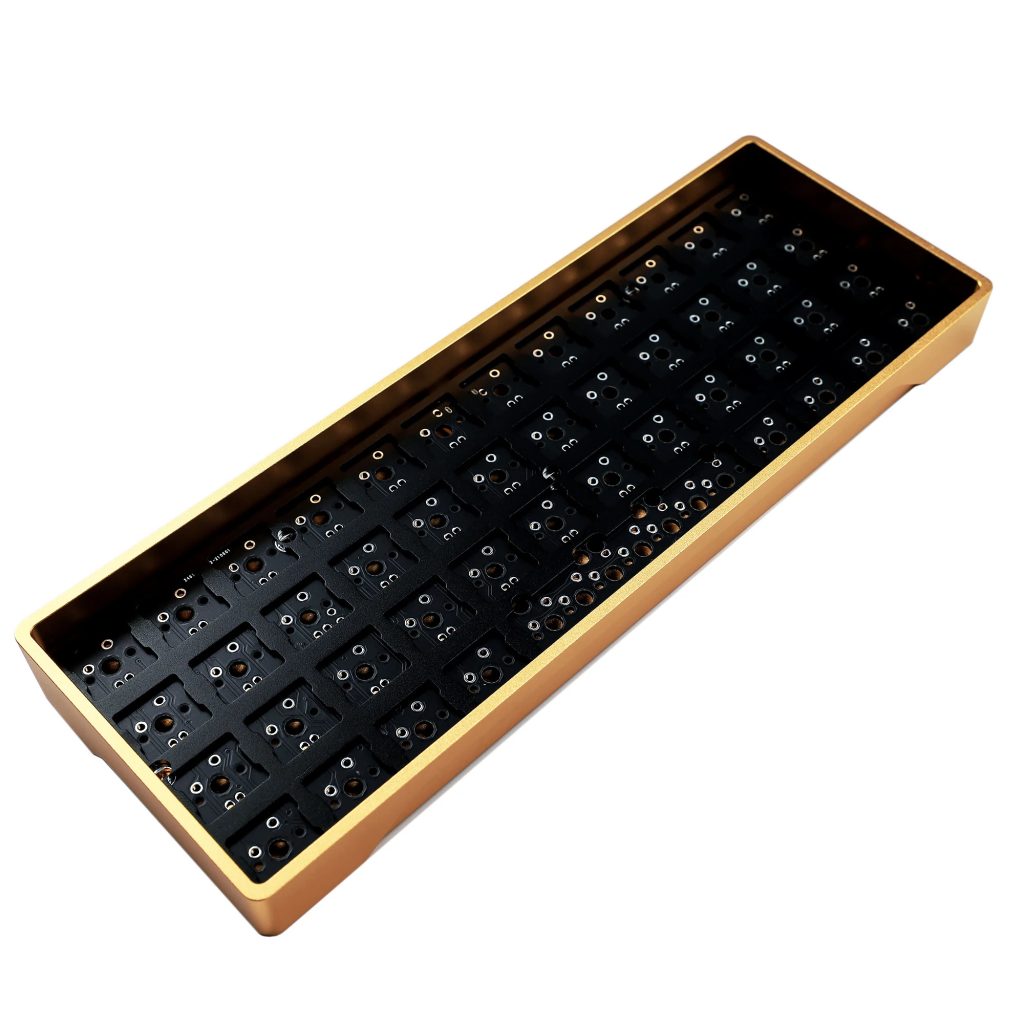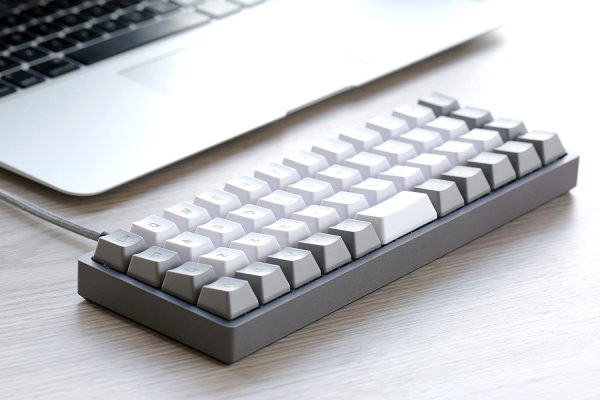What Is a 40% Keyboard?
If you’re new to keyboards, you may be unfamiliar with 40% keyboard layouts. Just what is a 40% keyboard? How does a 40% keyboard work? Moreover, how many keys are in a 40 keyboard layout? The first thing you should know is that there are varying keyboard sizes and layouts that set them apart. Keyboards with Numpads generally have a 100% (or full-sized) layout. These keyboards include all the letters of the alphabet and necessary symbols, numbers, and command keys to navigate your OS. However, the reason why not all keyboards are full-size is because of portability and size. That’s because these keyboards are generally large and bulky so they can’t fit smaller desk spaces. As a result, manufacturers have taken to creating smaller, more compact keyboards with a fraction of the full-sized keyboard’s layout. This is where the 40% keyboard layout comes in. As you might imagine, the 40% keyboard is roughly 40% the size of a full-sized keyboard. It chops off the Numpad that you normally see to the right of 100% keyboards. Moreover, it goes further and eliminates the arrow keys and numbers at the top-most row of 60%, 80%, and TKL keyboards. This leaves only about 47 keys on the device.
8 Best 40% Keyboard Models
What Should You Consider When Buying a 40% Keyboard?
Nonetheless, apart from this one caveat, the keyboard itself is great. For one, it’s a 40% mechanical keyboard, so the typing experience should be sufficiently clicky and tactile. Moreover, the keyboard is programmable via firmware and has RGB backlighting built-in. It’s also hot-swappable, so you can customize the keys anytime you want a change in design. Lastly, the keyboard comes with a USB-C connector and only comes in less than $60 for the plate and PCB. Apart from the ergonomics, the ErgoDox EZ is a great 40% keyboard for gaming. It comes with all the features you need, including fully-programmable RGB lighting, customizable double-shot keycaps, and even quirky animations. The keyboard also provides multiple programmable layers. This lets you easily access a Numpad, symbols, or any other key you normally miss on a 40% keyboard layout. Best of all, the ErgoDox Ez comes with a 2-year warranty. However, do note that there are downsides to this keyboard. For one, the new layout takes some getting used to as it’s wildly different from regular keyboards. In addition, the keyboard can easily cost over $300, depending on your specifications. Hence, it’s not going to be your first option if you’re more budget-conscious. If you’re ready to dive in, then we suggest the OLKB Planck Keyboard Kit, an ortholinear 40% keyboard. Through it, you can build a keyboard with keys that come all in the same size (excluding the spacebar). This gets you a unique aesthetic and allows for easier customization and installation of the keys. Apart from this, the Planck offers several other features that might interest you if you’re passionate about keyboards. For example, the keyboard is programmable and has multiple layers that you can access and reprogram. You can toggle between them using the keys beside the spacebar. In addition, the OLKB Planck kit comes with an aluminum body, so it’s quite sturdy. It also comes in different colors and employs a USB-C connection. Lastly, the keyboard provides hot-swappable switch sockets so you can easily customize and revamp the whole thing anytime. However, do note that it costs a whopping $100 to purchase – and that’s only for the case and frame. Nonetheless, if you’re passionate about building keyboards, it’s certainly recommended. For one, the Planck Ez is fully customizable through the QMK firmware. You can also choose from various switch options including Kailh, Cherry, and other hot-swappable switches. Moreover, the double-shot keys include RGB lighting and have multiple functions. This makes up for the lack of numbers and symbols, making it more functional than its other 40% keyboard counterparts. One thing to note is that this 40% keyboard has an ortholinear layout. This means all the keys are the same size except for the spacebar. Hence, the design is somewhat gridlike and has a learning curve to it if you’re used to regular keyboards. Nonetheless, if you can get past that, it provides a great experience overall. However, it does cost quite a bit and retails for nearly $250 on the company’s website. Apart from this, the keyboard has blue backlighting so it’s certainly great for both gaming or simply typing in darkness. It’s also very quiet – a rarity for something so tactile. Hence, it’s great for quiet home or office environments that require a silent keyboard. Lastly, the USB cable is detachable, making it great for portability. However, the keyboard isn’t perfect as it does only use ABS keycaps. This means you’ll get that greasy, shiny look over time the more you type on the keys. Nonetheless, this isn’t a particularly large setback, especially because it only costs a little over $50. Moreover, although its plastic build makes it less durable than aluminum, it also makes the keyboard much lighter. You can easily carry it and store it in your bag. Apart from this, the keyboard also includes durable PBT keycaps allowing for better longevity overall. This means the keys won’t become greasy or fade after prolonged use. The keys are also individually customizable and include four reprogrammable layers. Moreover, it employs Cherry MX switches, and you can choose between different variations of switches upon your purchase. Unfortunately, the Vortexgear Core 40% is pricey and goes for a little less than $100. It also uses a MicroUSB cable instead of USB-C – disappointing considering the price. Thankfully, the cable is detachable, so Vortexgear didn’t completely mess up on that front. At the very least, the detachable cable makes it more portable and easy to travel with. However, the aluminum frame does make it quite a bit heavier than other alternatives, so keep that in mind. As you might expect, YMDK provides you with a standard case and frame. The case is aluminum and comes in multiple color combinations. Cases with black plates come in navy, black, and coffee. On the other hand, cases with a silver plate come in rose, gold, and silver. Afterward, you’ll have to assemble the keyboard yourself and buy the switches, keycaps, and stabilizers separately. Sure, it’ll require more effort than the others on this list. However, it also means you have complete control over what the layout, colors, and typing experience will be like. It’s also the perfect kit to purchase if you’re just a beginner builder. However, do note that it will cost you a hefty $80 to purchase. Owning a 40% keyboard in itself might be something to boast about, considering how rare it is. However, just because a keyboard is relatively unique, doesn’t mean it’s high-quality. With that said, here are some of the things you should think about before buying a 40% keyboard.
Design
The first thing you should certainly think about before buying a 40% keyboard is the design. After all, if you’re going to use this keyboard every day, it might as well be pretty to look at. With that said, it’s important to consider whether you like a keyboard’s aesthetic quality or not. It would be even better if the keys were hot-swappable so you can customize the keyboard’s design anytime you want. Apart from the aesthetics, the functional design of the 40% keyboard you’re buying is also important. For example, it’s more recommended to purchase a keyboard that has Cherry MX switches. This will allow for more customization and easy replaceability if ever your current keycaps break.
Value
A 40 keyboard layout in itself can have tons of benefits. However, some brands inherently provide more value than others. For example, some bundles might provide you with a 40% keyboard with Numpad, supplementing the lack of number keys inherent to the layout. Others might provide special features like backlighting or wireless connectivity. Regardless of what a brand offers, remember to weigh your options carefully to get the most out of your purchase.
Build Quality
Lastly, you must consider the keyboard’s durability and build quality. This means it’s better to buy keyboards made of durable material – like aluminum or PBT plastic. Of course, buying something less sturdy like ABS or plastic isn’t bad. That’s because these materials, while less durable, can lower the price. Nonetheless, it’s all about balancing which one you prioritize: affordability or longevity.
Benefits of Using a 40% Keyboard
Is there a 40% keyboard? We know the answer to that question is yes. However, the bigger question surrounding 40% keyboard layouts isn’t if they exist, it’s why. That’s what this section is about: to answer why 40% keyboard models exist and what they are good for. Firstly, the 40% keyboard layout is the best choice you have if you have a minuscule desk. That’s because it’s compact and tight, making it great for small spaces. Moreover, the gap between each key on a 40% keyboard is tiny, allowing for easier reach while typing. It’ll no doubt prove useful for people who do a lot of typing and need to do so quickly. Apart from this, the keyboard’s small size also makes it great for portability. If you like to travel then you won’t have to purchase a separate, more portable keyboard just to do so. You can simply pack it up in your bag and take it with you anywhere. This also means you don’t have to sacrifice typing experience just to get that extra portability. The tactile keys and typing experience on your mechanical 40% keyboard will be the same wherever you go.
40% vs 60% Keyboard: Which Should You Get?
The mini form factor of the 40% keyboard might be great for portability and small spaces. However, it’s not the best choice for everyone as there are slightly larger but more functional keyboard layouts out there. For example, the 60% keyboard – the next smallest keyboard size – adds a convenient number row to the 40% layout. This allows it to remain compact and symmetrical like 40% keyboard models. However, it’s more functional, as you don’t have to use layers or shortcut keys to type in numbers. It’s also more common than the 40% keyboard layout so you won’t have problems finding products of this size. The switches and keycaps are also cheap if you’re into building keyboards yourself. On the other hand, people who don’t want to build keyboards themselves will also have more options for pre-built ones. With that said, the 40% keyboard layout isn’t completely terrible. After all, there are many ways keyboard manufacturers circumvent the lack of additional keys. Nonetheless, the keyboard’s size and layout might be too small for some. For most people, that extra space saved isn’t worth the cost of losing access to numbers or arrow keys. If that sounds like you, then we recommend checking out the 60% or even 65% models. They’re sufficiently small and can save you enough space without losing functionality.
Try Out a 40% Mechanical Keyboard Today
Even though the customizable mechanical keyboard market is growing, it’s surprisingly hard to find good 40% keyboard models. Perhaps it’s because the layout isn’t as popular because of the lack of a number row. It’s also not as easy to work with as you’d have to forego the arrow keys. Nonetheless, there are solid 40% keyboard options out there despite them not being as plentiful. You just have to know where to look.
